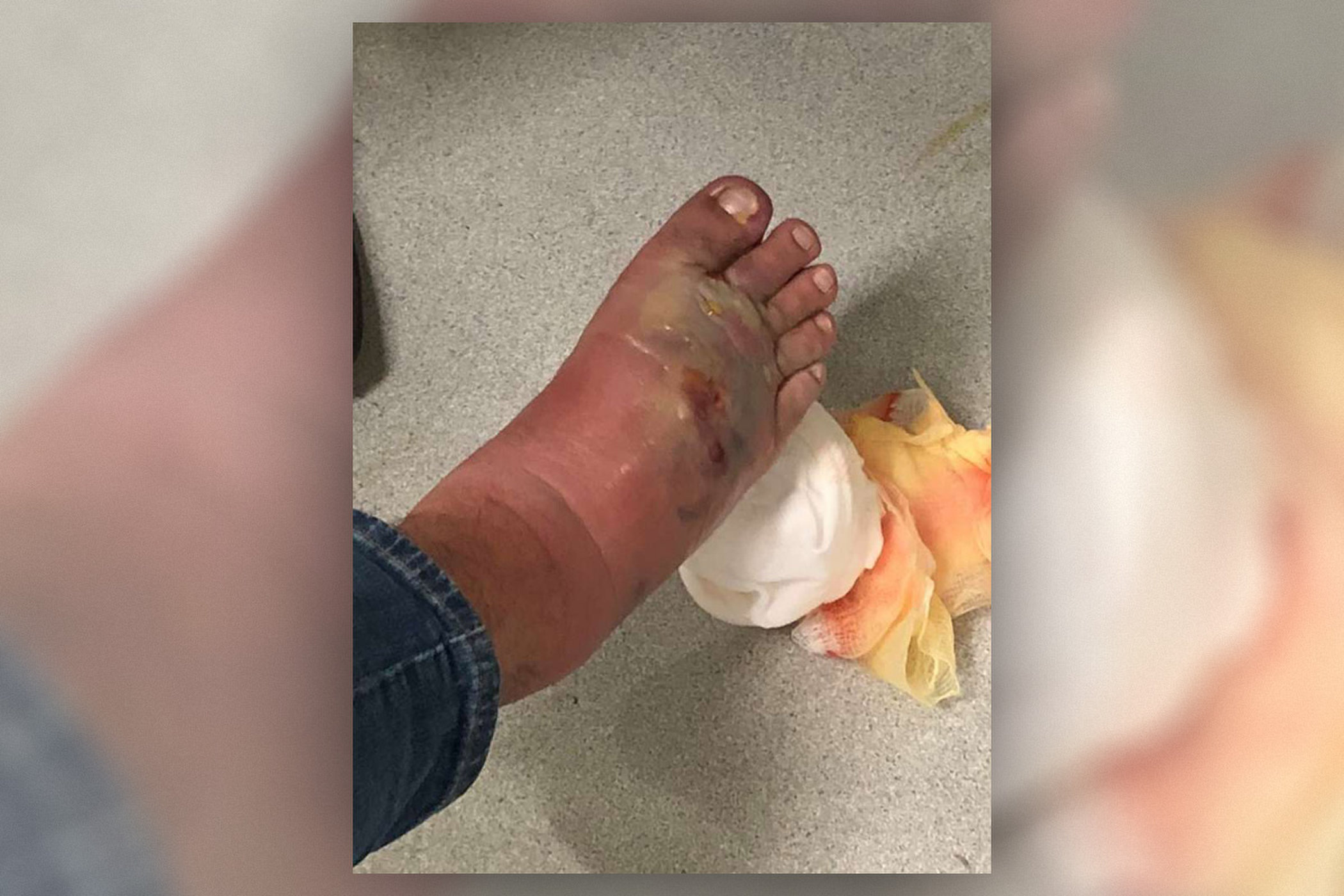A man in Texas, USA, who thought he had a simple blister on his foot actually had a life-threatening infection with flesh-eating bacteria. He had to have his foot amputated.

The information is reported by the Houston chronicle but has toured the United States. The man, Raul Reyes, is 26 and works at a daycare center in Houston. He injured his toe, around a fingernail, one day at work and noticed swelling quickly.

A few days later, a blister appeared, which he attached to his shoes. But when he woke up the next day, the blister had extended to cover his entire foot, so he went to the emergency room, said Joseline Reyes, his wife.
Amputated due to a life-threatening infection
Reyes was hospitalized on February 23 and underwent emergency surgery. Doctors tried to save Reyes’ foot, but despite their efforts to eliminate potentially fatal bacteria “they had to amputate the foot to save his life,” said Joseline Reyes.
Raul Reyes, 26, hurt his right foot at work and at first thought the swelling was from the injury. https://t.co/Dwv6G3dZkd
– New York Daily News (@NYDailyNews) March 6, 2018
It was a “necrotizing fasciitis” a serious infection linked to a bacteria that destroys the skin, subcutaneous tissues, aponeuroses and muscles, unlike bacterial necrotizing dermo-hypoderma which affects the skin and the skin. subcutaneous tissue but respect the muscles and fascia, according to dermatological therapy.
The “flesh-eating” bacteria
Several types of bacteria can cause necrotizing fasciitis: group A streptococcus, klebsiel, Clostridia, Escherichia coli, and Staphylococcus aureus. These bacteria can be resistant and there are cases with several bacteria at the same time.
It is a rare infection (500 cases per year reported in the USA and the UK) and we do not always understand why these infections occur. Immunosuppressive treatments and non-steroidal anti-inflammatory drugs would be contributing factors.
Most often, people get necrotizing fasciitis when bacteria enter the body through a small wound on the skin. In Reyes’ case, doctors believe the bacteria entered his body through a satellite sore on an ingrown toenail.
Disproportionate pain
Once inside the body, bacteria can spread quickly, and symptoms of necrotizing fasciitis can begin within hours of an injury. The skin may turn red or purplish, and some people see ulcers, blisters, or black spots on their skin.
Patients with the infection often experience pain that they describe as hurting much more than they might expect from their injury. It is this disproportion between the pain felt and the appearance of the lesion that should alert on the potential severity and seek consultation as quickly as possible: it does not end each time with an amputation.
Now that Reyes’ foot has been amputated, his family has created a page GoFundMe to raise money for a prosthetic foot and Reyes wants to get back to work as soon as possible.

.

















